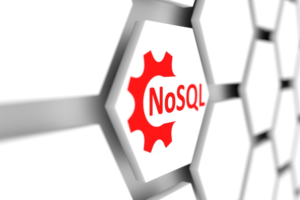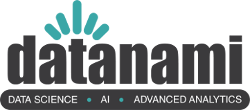2014 – NoSQL Has Its Day

For several decades starting in the late 1970s, relational database management systems (RDBMSs) were the workhorses of IT. It became a best practice for companies to store their most important structured data, such as customer names and product orders, in an RDBMs like Oracle, Db2, and SQL Server, which formed the common data foundation atop which enterprise applications ran.
But in the mid-2000s, big data began to chip away at this computing monolith. As data volumes and velocities increased, it pushed the limits of what companies could cram into a single database confined to a single machine. And as the Web and mobile worlds exploded, developers clamored for a relief from strict database models and schemas imposed by RDBMSs. And finally, some just wanted to break out of Ted Codd’s Structured Query Language (SQL) realm (although many would soon regret it).
These events set the stage for a blossoming of new database types, with many of the new databases going by the NoSQL moniker.
NoSQL databases largely shared a series of characteristics. Most of them were scale-out, meaning they could run on a cluster of servers, not just a single machine. And many of these NoSQL databases had no database schemas or relaxed schemas, which made it easier for Web and mobile application developers to add new data types and fields to their applications.
Many of these NoSQL databases also abandoned SQL in favor of their own query languages. However, some of them kept SQL, which led to the reformulation of the term “NoSQL” to mean “Not Only SQL.”
Several types of NoSQL databases emerged or became popular, many of which were open source, including key-value stores (such as Redis, memcache-d, BerkelyDB); wide column stores (Google Bigtable, Apache HBase, Apache Cassandra); document stores (MongoDB, Couchbase, MarkLogic), and graph databases (Neo4j).
In many ways, the rise of NoSQL databases paralleled the rise of another non-relational technology, Apache Hadoop. With NoSQL, companies wanted to explore new ways of storing operational data that powered new Web and mobile applications, whereas with Hadoop, a cheaper, more open place to house unstructured data was the primary goal.
In 2014, Gartner suddenly saw both NoSQL and Hadoop as worthy of adding to its Magic Quadrant for data warehouses, which signaled that the technology was ready for wider adoption in the enterprise. Interestingly, Gartner also added to its list NewSQL databases, another data management system that borrows the distributed nature of NoSQL databases and (in some cases) relaxed ACID properties of data stores.
NoSQL database vendors had a great year in 2014. Couchbase landed a $60 million Series E venture funding round, which it intended to use to go against MongoDB, which had jumped out to an early lead in the NoSQL space thanks to its popularity among developers. DataStax, the vendor behind Apache Cassandra, would haul in $106 million in venture money as it passed the 500-customer mark.
Other NoSQL vendors making news in 2014 include Aerospike and MapR Technologies (now owned by HPE), which supported a NoSQL data store in its proprietary Hadoop platform. Redis Labs was in the process of scaling up its business, and FoundationDB (which would be bought by Apple in 2015) was busy scaling its key-value store to ridiculous heights. Neo4j, which established an early lead in the graph database department, enjoyed a surge in interest in graph databases in 2014.
The market would stay hot into 2015, when MarkLogic, an early supporter of multi-modal databases could shape-shift depending on data requirements, hauled in $102 million in venture funding. NoSQL databases are still popular, but the market has shifted. Many RDBMs have been adopted to run in a distributed manner and to support other data types that previously were the primary domain of NoSQL databases, such as JSON. For that reason, 2014 was the year of NoSQL database.
Related Items:
2020 – COVID-19 — Kicking Digital Transformation Into Overdrive
2019 – DataOps: A Return to Data Engineering
2018 – GDPR and the Big Data Backlash
2017 – AI, Deep Learning, and GPUs
2016 – Clouds, Clouds Everywhere
2015 – Spark Takes the Big Data World by Storm
2013 – The Flourishing Open Source Ecosystem

